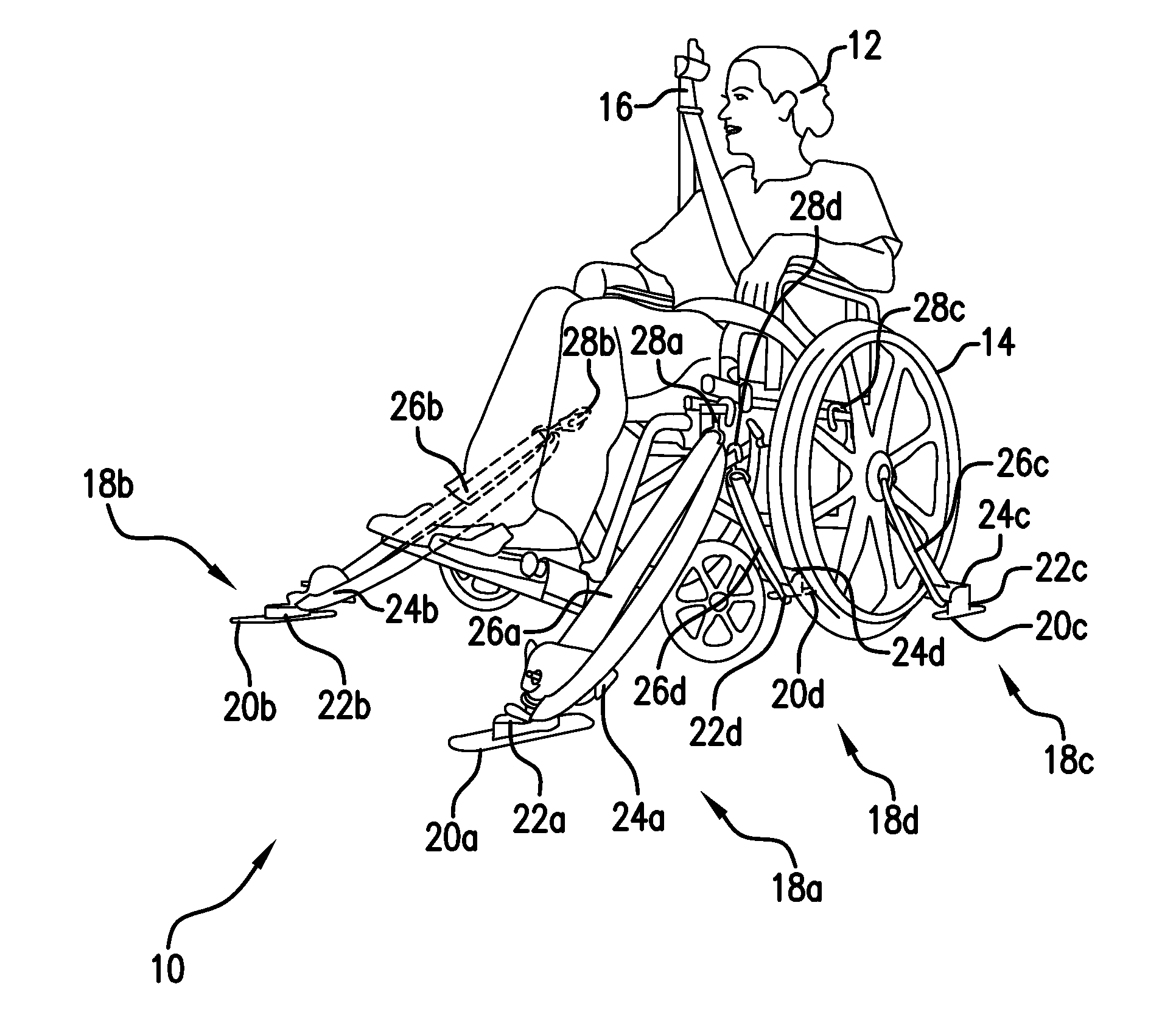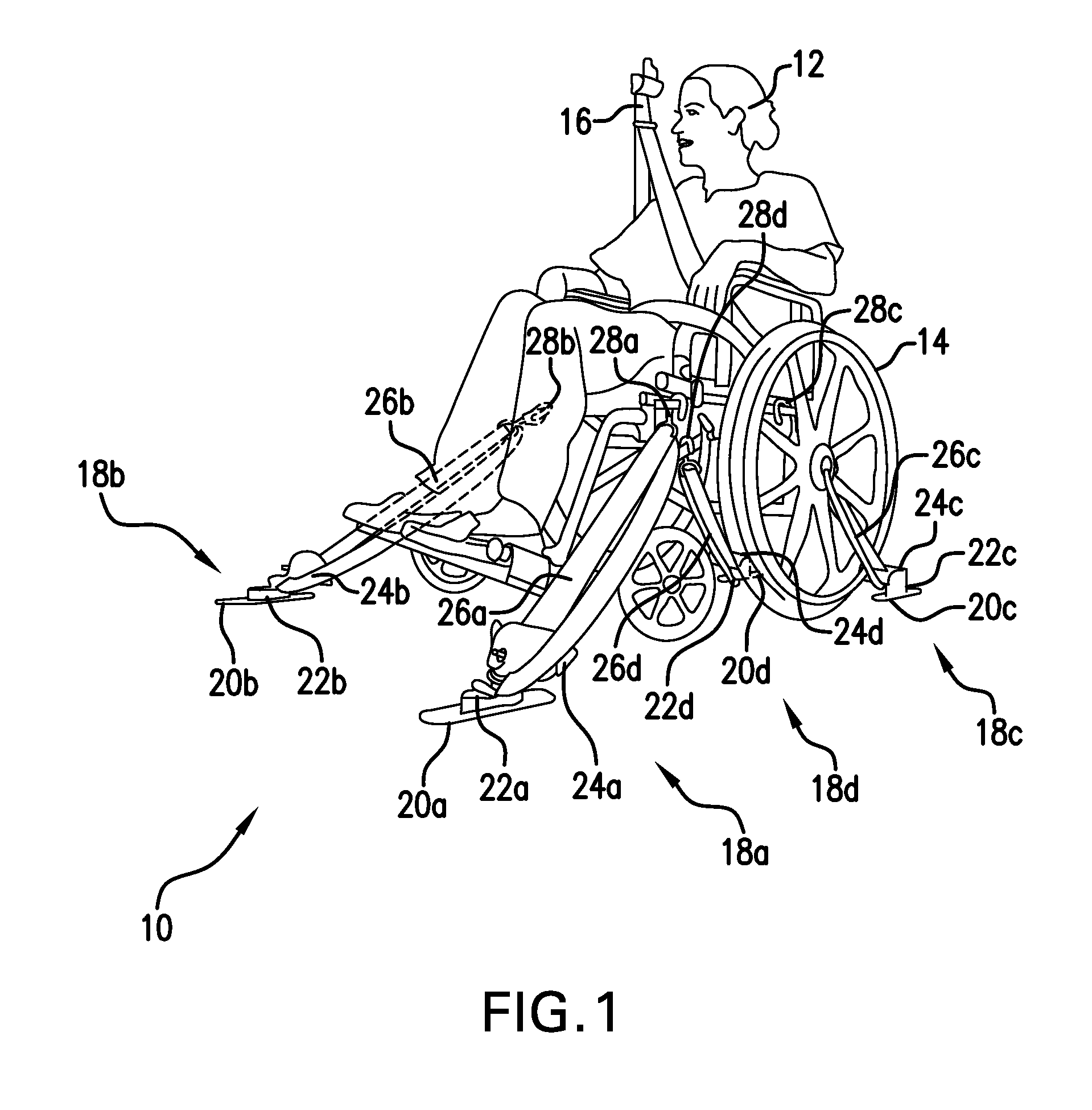Wheelchair Securement System and Device
a securement system and wheel chair technology, applied in the field of wheelchair securement methods, systems and devices, can solve the problems of reducing increasing the difficulty of installation or use, and often limited refractor type tie-downs, so as to increase the effective strength of the retractor, increase the capacity of the retractor, and increase the strength of the securement assembly 18a
- Summary
- Abstract
- Description
- Claims
- Application Information
AI Technical Summary
Benefits of technology
Problems solved by technology
Method used
Image
Examples
Embodiment Construction
[0028]Referring first to FIG. 1, one embodiment of a wheelchair securement system 10 is shown for securing a wheelchair 14 and its occupant 12 in a vehicle. As shown in FIG. 1, the wheelchair securement system 10 includes an occupant restraint system 16, wheelchair securement assemblies 18a, 18b, 18c, and 18d (or tie-down assemblies 18a, 18b, 18c, and 18d), mounting brackets 20a, 20b, 20c, and 20d, and 22a, 22b, 22c, and 22d. In one embodiment, each wheelchair securement assembly 18a, 18b, 18c, and 18d includes a retractor, a restraint, and a wheelchair connector. As shown in FIG. 1, the securement assembly 18a includes a retractor 24a, a restraint 26a; the securement assembly 18b includes a refractor 24b, and a restraint 26b, and a wheelchair connector 28b; the securement assembly 18c includes a refractor 24c, a restraint 26c, and a wheelchair connector 28c; and the securement assembly 18d includes a retractor 24d, a restraint 26d and a wheelchair connector 28d.
[0029]The wheelchai...
PUM
 Login to View More
Login to View More Abstract
Description
Claims
Application Information
 Login to View More
Login to View More - R&D
- Intellectual Property
- Life Sciences
- Materials
- Tech Scout
- Unparalleled Data Quality
- Higher Quality Content
- 60% Fewer Hallucinations
Browse by: Latest US Patents, China's latest patents, Technical Efficacy Thesaurus, Application Domain, Technology Topic, Popular Technical Reports.
© 2025 PatSnap. All rights reserved.Legal|Privacy policy|Modern Slavery Act Transparency Statement|Sitemap|About US| Contact US: help@patsnap.com



